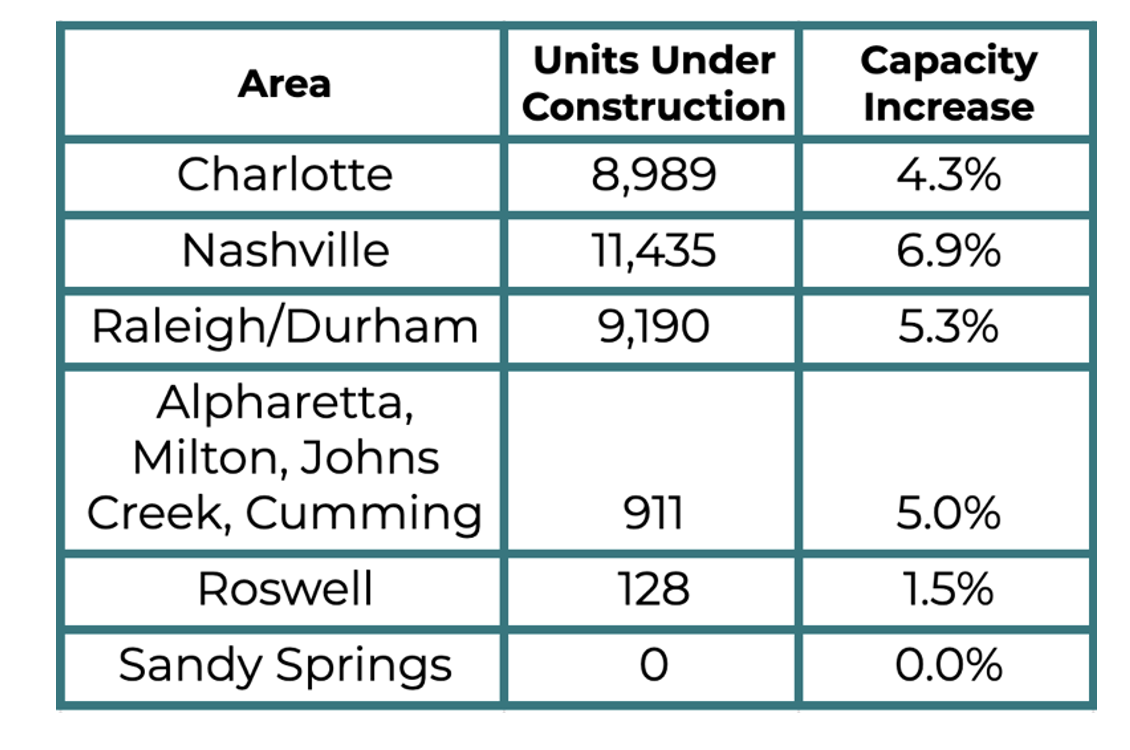What is the Plan?
Business leaders and sports coaches know the value of scouting competitors, to adjust their approach and create a winning strategy. Even faith leaders are known to look at neighboring church parking lots to see if the new choir or multimedia sermon is increasing attendance.
Community planners and economic developers are no exception. The best in the business visit other communities to find new and better ways to attract new businesses and retain a viable workforce. The best of the best enter these benchmarking opportunities with an open mind. It is not enough to leave a site visit with “that will not work in my town.” Rather, it is “how can I adapt that innovative idea to make my city even better?”
Raleigh, NC is one of the cities that North Fulton leaders often use as a comparison location. Charlotte and Nashville areas are frequently competitor locations for companies considering a move to the Atlanta region. And, when it comes to workforce housing, it looks like some of these cities may know something we can learn from.
A national real estate technology company recently released data on multifamily building permits in select cities to forecast capacity.
Certainly, building housing does not mean these homes will be priced right for teachers or police officers starting their careers. With rapidly rising land prices in North Fulton these new units would likely skew toward “luxury” models. All the more reason to have intentional solutions to provide for our current and future middle-income workforce.
North Fulton is a desirable place and is experiencing very strong population growth. Between 2015-2020, the U.S. Census reports that we increased by more than 12,000 households, almost a 9% growth.
That growth has largely been in households earning more than $75,000 a year, increasing 27% over 5 years.
In traditionally ‘normal’ times, this would be great news. More affluent families mean a higher tax base. Higher tax base means more money for services - public employees like police, firefighters, and school teachers. But these are not normal times. While we have had an influx of citizens needing more services, we have an exodus of the candidates who could fill those jobs. During this same timeframe, we lost 8,130 families earning less than $75,000 a year. This is largely our entry level workforce. Logically, at least part of the exodus can be attributed to the price of housing.
How can we tell that this exodus may include working age families? This month, Fulton County Schools reported that enrollment in North Fulton and Sandy Springs schools is down and could drop by 3,801 students in the next 5 years. South Fulton, with a broader array of housing price points and more focus on workforce housing, is forecast to have more constant enrollment during that same period. And our neighboring counties, Gwinnett and Forsyth, show enrollment increases of 1.23% and 3.14% respectively.
School officials attribute the North Fulton decline to a lack of affordable housing, an aging population, and low birth rates. The kinds of problems that can best be solved by finding more ways for young families to live and work here.
The pandemic has amplified the problems our community has with a healthy local workforce. In ‘normal’ times, the marketplace would provide a balance to house the influx of new residents at all income levels. Housing would be built for entry level & hourly workers and starter homes for young families to live near their jobs. There would be options for empty nesters to stay in the community, while making way for their houses to be purchased by growing families in mid-career. Clearly, these are not normal times.
If we agree that these times are unusual, and that a local workforce is critical to our economic balance, we will need to find different solutions to the challenge of providing balanced housing. We cannot rely on these essential workers to work here but live in other counties. Those growing communities have similar jobs paying similar salaries. Why would a worker spend time in traffic, and pay for gas, to drive 45+ minutes to work in Roswell when they could have a similar job close to where they live in Canton or Cumming?
This situation certainly is not unique to North Fulton. Many communities in the U.S. are experiencing similar challenges. Some of those communities are producing innovative solutions to allow more nurses, teachers and first responders to live close to their jobs.
Many of us are wondering how to “downsize” our home but stay in our community. Where can our children live as they start their careers? Why does it seem so difficult to fill jobs in North Fulton?
What do the leaders in Raleigh, Nashville, or Charlotte know that we don’t? Ask your community leaders, “What’s our plan to have a winning strategy?”
Reminder: Please sign The North Fulton Promise.


